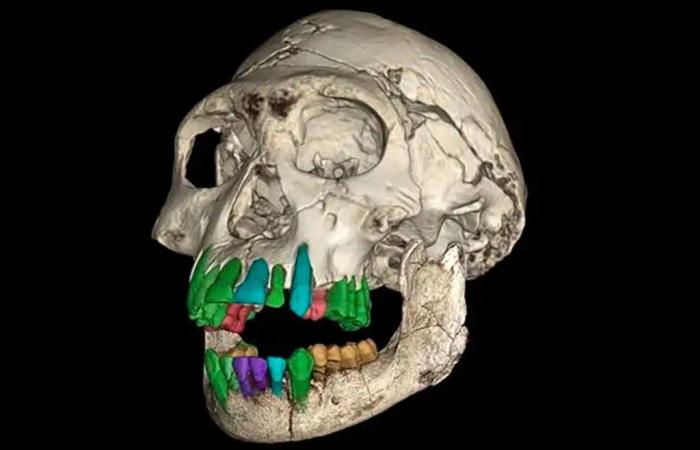
Paleoanthropologists from the University of Zurich, led by Christoph Zollikofer, have made an exciting discovery at the site of Dmanisi, Georgia. They analyzed the fossil teeth of a young hominid approximately 11 years old, dating from 1.77 to 1.85 million years ago. These fossils belong to one of the oldest known representatives of the genus Homo.
The study, published in Nature on November 13, 2024, reveals an unexpected tooth growth pattern:
- Slow development of premolars and molars until the age of 5
- Monitoring an acceleration of tooth growth
- Dental maturity reached between 12 and 13.5 years
This model of hybrid development, both human and simian, suggests a first evolutionary attempt to extend childhood. This discovery challenges the idea that prolonged childhood appeared only with brain expansion of theA wise man.
Implications for our understanding of human evolution
Dmanisi's discovery opens new perspectives on the evolution of human childhood. Contrary to the popular idea that human evolution follows a linear path, this study suggests complex variations in the development of early hominids.
Dr Kevin Kuykendall from the University of Sheffield highlights the importance of this discovery:
| Characteristic | Homo de Dmanisi | Modern humans | Chimpanzees |
|---|---|---|---|
| Dental maturity | 12-13,5 ans | 18-22 ans | 11-13 ans |
| Brain size | Slightly superior to chimpanzees | Very large | Reference |
This comparison highlights the intermediate position of Homo de Dmanisi in the evolution of human development. Their unique growth pattern could represent an early evolutionary experience of childhood extension.
Debate on the interpretation of the results
The scientific community remains divided on the interpretation of these findings. Tanya Smith, a paleoanthropologist at Griffith University, disputes the idea of prolonged childhood among the Homo of Dmanisi. She points out that the eruption of the first molar around age 3.5 is closer to the pattern of chimpanzees than modern humans.
Other factors could have influenced the dental development of these first Homo:
- Availability and variety of foods
- Weaning age
- Environmental constraints specific to Dmanisi
These elements underline the complexity of human evolution and the need for a multidisciplinary approach to understanding our origins. The Dmanisi fossils, whether representing our direct ancestors or a parallel branch, offer valuable insight into the evolutionary experiments that shaped our species.
Future prospects for paleoanthropological research
This study opens new avenues for research into human evolution. X-ray imaging techniques used to analyze microscopic growth lines inside fossil teeth offer unprecedented opportunities for studying the development of ancient hominids.
Researchers hope to apply these methods to other fossils to build a more complete picture of the evolution of human development. Future studies could focus on:
- Comparative analysis of fossils of other species ofHomo
- Exploring the links between dental development and other aspects of growth
- The study of environmental and social factors influencing childhood development
Ultimately, these findings remind us thathistory of our species is far from linear. Each new discovery adds a piece to the complex puzzle of human evolution, bringing us one step closer to understanding our unique origins.





